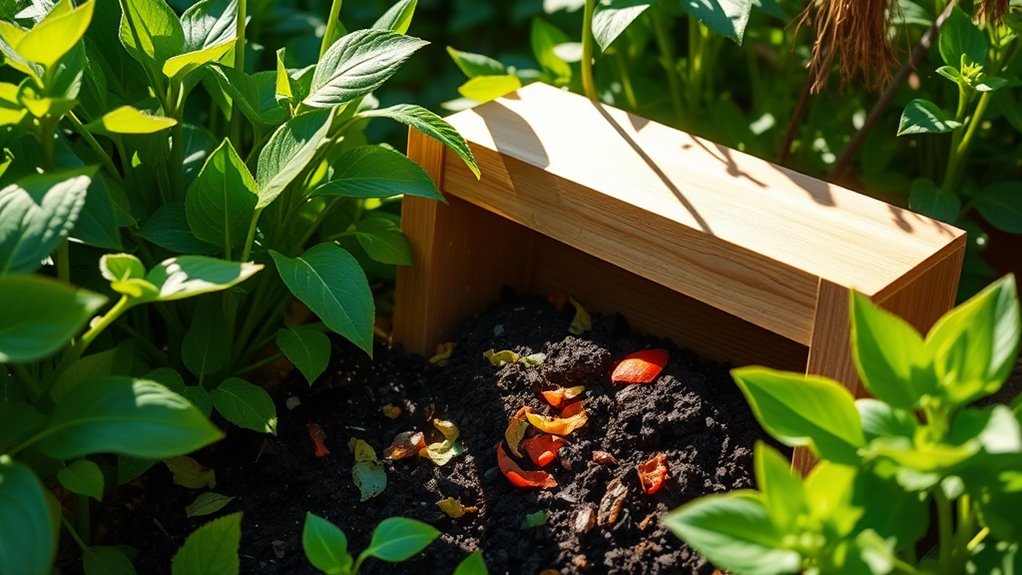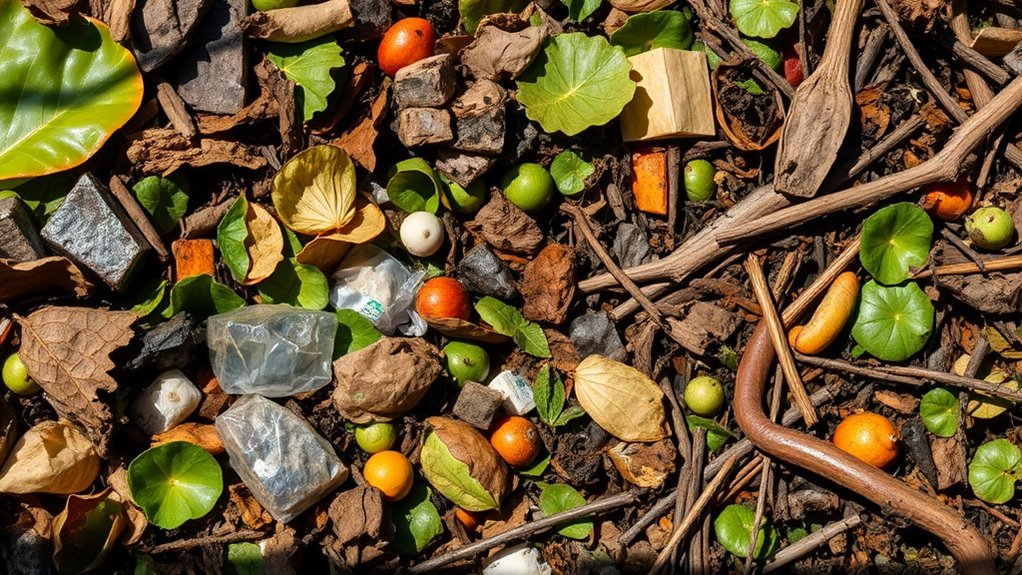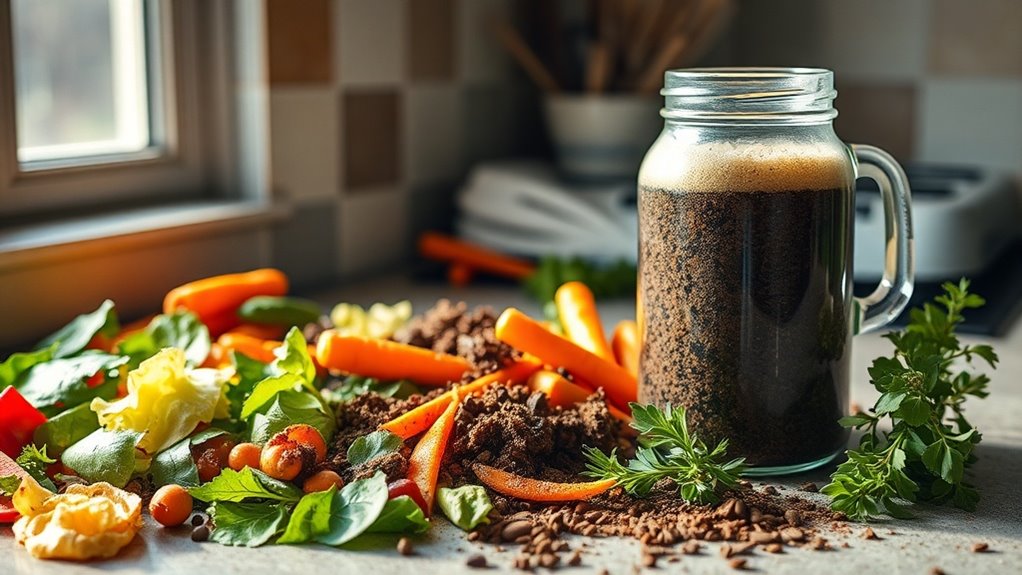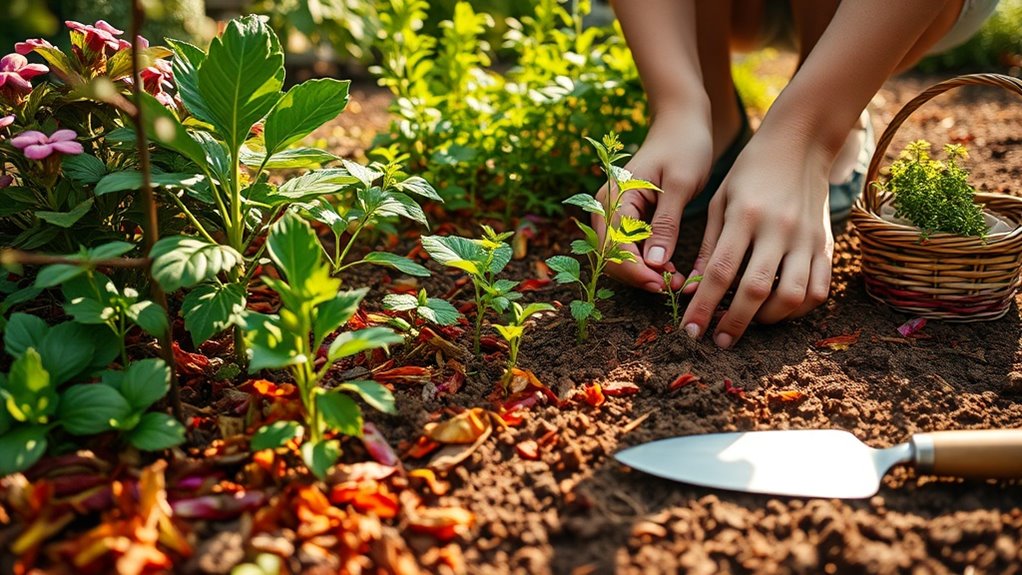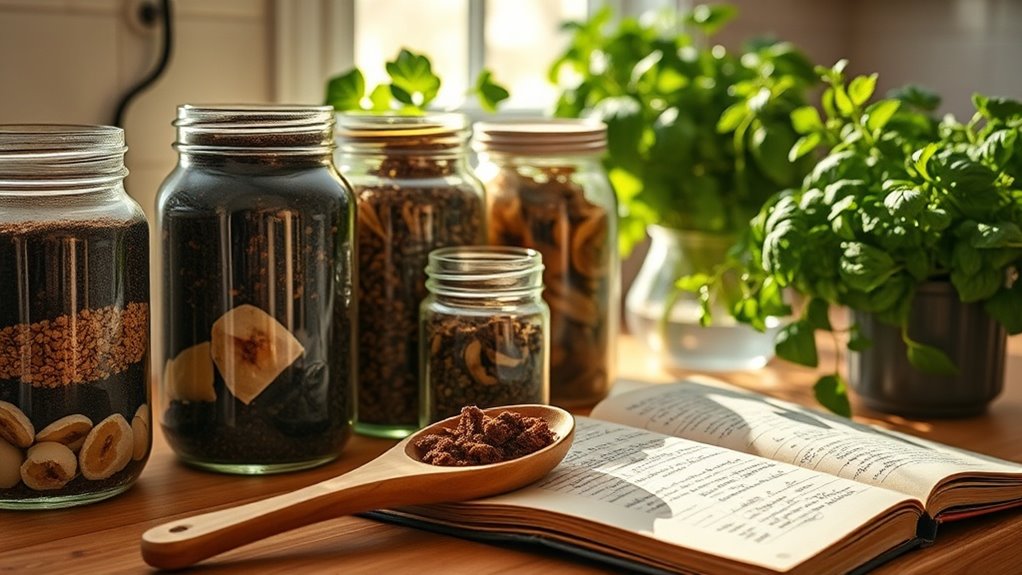Build a Mini Compost Bin That Fits in Any Corner
Is it really possible to reduce household waste while enriching your garden soil with a simple DIY project? Building a mini compost bin that fits snugly in any corner of your yard or balcony might be the answer you’re looking for. This compact solution not only helps you manage kitchen scraps but also promotes sustainable living. Curious about how to get started and what materials you’ll need? Let’s explore the steps together.
Key Takeaways
- Choose a compact design that fits easily in small spaces like corners or balconies to maximize accessibility.
- Select eco-friendly materials like recycled wood or plastic for sustainability and durability in your mini compost bin.
- Incorporate ventilation holes and a secure lid to promote airflow while keeping pests out.
- Ensure the bin has a proper drainage base to maintain moisture levels without becoming soggy.
- Regularly turn the compost and monitor moisture to achieve quick decomposition and nutrient-rich results.
Choosing the Right Location for Your Mini Compost Bin
When choosing the right location for your mini compost bin, you might wonder what factors will make the most difference in your composting success.
First, pick a spot that’s easily accessible, so you’ll be encouraged to add kitchen scraps regularly.
A shaded area is ideal since it helps maintain moisture without overheating your compact compost bin.
Also, consider proximity to your garden; you’ll want to take advantage of the nutrient-rich compost later.
Ensure good air circulation around the bin, as this promotes decomposition.
Additionally, placing your compost bin near a water source can make it easier to maintain the necessary moisture levels.
With the right location, you’ll maximize your bin’s efficiency and enjoy the fruits of your labor sooner!
Materials Needed for Construction
To build your mini compost bin, you’ll need a few essential components and tools at your fingertips.
Consider using eco-friendly materials that not only support your composting goals but also benefit the planet. Additionally, incorporating common household items can help reduce waste and make composting accessible for everyone.
Let’s explore what you’ll need to get started on this sustainable project!
Essential Compost Bin Components
A well-constructed mini compost bin requires specific materials that make the process efficient and effective. Choose items that are durable and promote aeration for optimal decomposition. Here’s a quick overview of essential components:
| Component | Purpose | Recommended Material |
|---|---|---|
| Bin Container | Holds compost | Plastic or wood |
| Ventilation Holes | Allows airflow | Drill or pre-made holes |
| Base | Supports drainage | Wire mesh or slats |
| Lid | Keeps pests out | Hinged or removable |
Gather these materials to ensure your composting experience is successful and sustainable!
Suggested Tools for Assembly
Building your mini compost bin requires a few essential tools that will make the assembly process smooth and efficient.
You’ll need a drill with drill bits for creating holes, a saw for cutting materials to size, and a measuring tape to ensure accuracy.
A screwdriver will help you secure components tightly, while a level ensures your bin sits evenly.
Don’t forget safety goggles to protect your eyes during cutting and drilling.
Having these tools on hand will streamline your project, making it not only easier but also more enjoyable.
Eco-Friendly Material Options
What materials can you use to create an eco-friendly compost bin that’s both functional and sustainable?
Choosing the right materials not only helps the environment but also enhances your composting experience.
Here are three great options:
- Recycled Wood: Repurposed pallets or scrap wood provide sturdy walls while minimizing waste.
- Wire Mesh: This allows for airflow, speeding up the composting process while using minimal resources.
- Bamboo: A renewable resource, bamboo is strong, lightweight, and naturally resistant to decay.
Step-by-Step Instructions for Building the Bin
Now that you’ve gathered your materials, it’s time to put them to use!
Follow these step-by-step instructions to assemble your mini compost bin with ease.
Creating a compost bin is a fantastic way to reduce waste and enrich your soil, especially in urban spaces where traditional composting may be challenging.
Let’s get started on creating an eco-friendly solution for your kitchen scraps!
Materials Needed for Construction
To create your mini compost bin, you’ll need a few essential materials that are easy to find and affordable.
Gather these items to kickstart your composting journey:
- Plastic container: A sturdy, 5-gallon bucket or similar works well for retaining moisture and heat.
- Drill: You’ll need this to create ventilation holes, ensuring proper aeration for decomposition.
- Browns and greens: Collect kitchen scraps and dry leaves or cardboard to balance your compost.
With these materials in hand, you’re well on your way to building an efficient compost bin that fits perfectly in any corner of your home!
Assembly Process Explained
Kick off your composting project by assembling your mini compost bin with these straightforward steps.
First, lay out your materials and tools. Cut the wood or plastic to your desired dimensions.
Next, create a base by securing the bottom panel with screws or nails. Attach the sides, ensuring they’re snug and sturdy. Don’t forget ventilation holes to allow airflow!
Once the walls are up, add the top, making it easy to access. Finally, paint or seal your bin for durability.
With your bin ready, you’re all set to start composting and reducing waste while enriching your garden soil!
Tips for Maintaining Your Compost
Maintaining your compost is crucial for achieving rich, fertile soil.
Regular attention ensures the decomposition process runs smoothly.
Here are some tips to keep your mini compost bin thriving:
- Turn your compost every few weeks to aerate it and speed up decomposition.
- Monitor moisture levels; your compost should be damp but not soggy. Add water or dry materials as needed.
- Keep a balanced mix of greens (nitrogen-rich) and browns (carbon-rich) to maintain healthy microbial activity. Additionally, proper aeration helps to prevent odors and promote faster breakdown of materials.
What to Compost and What to Avoid
Composting is a fantastic way to recycle organic waste and enrich your garden soil, but knowing what to include can make all the difference.
You should add fruits and vegetables, coffee grounds, eggshells, and yard waste like leaves and grass clippings. These materials break down easily and provide essential nutrients. Additionally, consider adding common household items like shredded paper and cardboard, which can also enhance your compost mix.
Avoid meat, dairy, oils, and processed foods, as they can attract pests and cause odors. Also, steer clear of dog and cat waste, which may contain harmful pathogens.
Troubleshooting Common Composting Issues
Have you ever wondered why your compost isn’t breaking down as expected?
It could be due to a few common issues.
Here’s what you should check:
- Carbon-to-nitrogen ratio: Too much carbon (like dry leaves) or too much nitrogen (like grass clippings) can slow decomposition.
- Moisture levels: If the compost is too dry, it won’t break down. If it’s too wet, it can become smelly.
- Aeration: Lack of oxygen leads to anaerobic conditions, which hinder composting.
To further enhance the breakdown process, consider using techniques to accelerate compost decomposition, and you’ll see your compost bin thriving in no time! Happy composting!
Benefits of Having a Mini Compost Bin
While you might think that composting is only for those with sprawling backyards, a mini compost bin offers numerous benefits, even in small spaces.
You’ll reduce kitchen waste, turning scraps into nutrient-rich soil, which is great for your plants.
It’s a practical way to contribute to environmental sustainability, cutting down landfill waste.
Plus, having a mini bin encourages you to rethink your food habits and make greener choices.
The compact size means you can place it on a balcony or countertop, making it incredibly convenient.
In just two weeks, you can quickly transform your kitchen scraps into nutrient-rich compost, making this eco-friendly solution even more rewarding.
Embrace this eco-friendly solution and enjoy the satisfaction of nurturing your own compost right at home!

